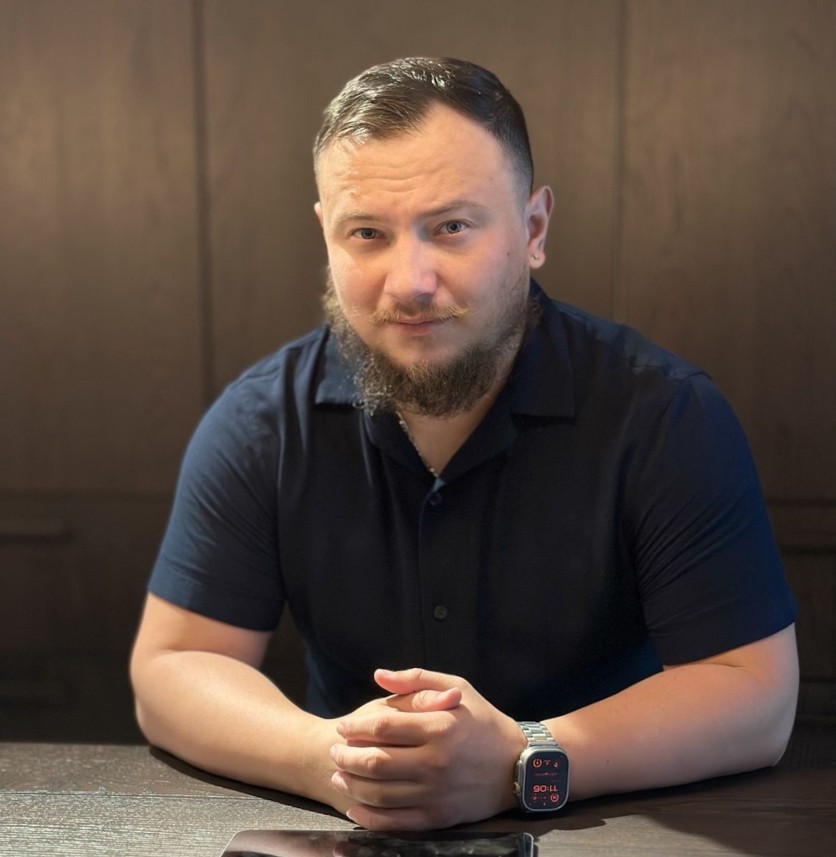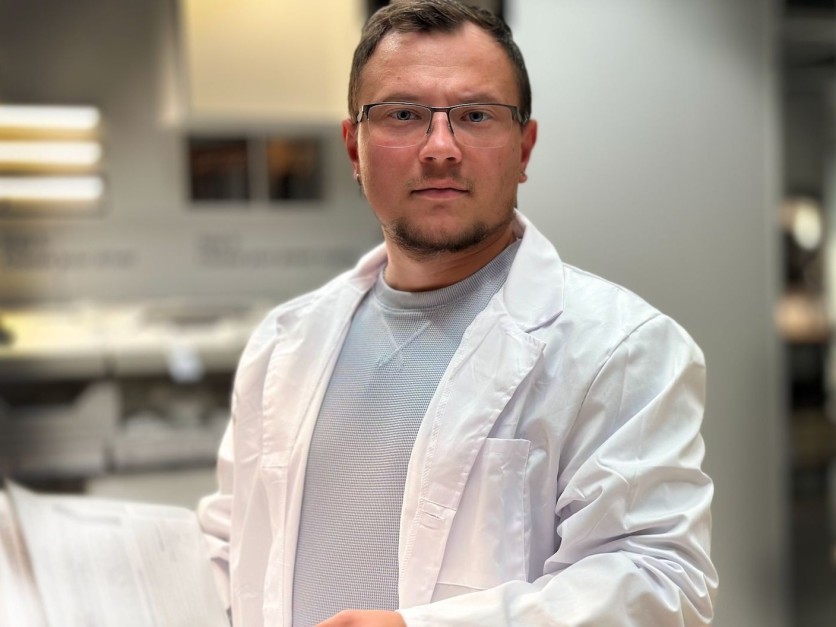In October in Chicago, this impact was recognized at the Cases & Faces International Business Award, one of the industry's notable competitions. This year, the jury included Andrii Nikulin—a hands‑on engineer known for translating "innovation" into the language of telemetry, hard metrics, and real ROI. His status as an invited judge is not a courtesy but a marker of outstanding reputation: at global awards, seats go to those who have repeatedly proven—in production and in business—the ability to assume a critical role and deliver results. That invitation is precisely why we're looking at where engineering is heading in the U.S. and Europe—and how an industrial engineer's approach differs when he is accountable not for slides but for cadence and P&L.
Why Now: Industry 5.0 Hits the Floor
As factories adopt Industry 5.0 principles—AI‑assisted vision, predictive maintenance, and closed‑loop control—executives face a simple test: do "innovations" actually move downtime, scrap, throughput, and energy per ton? The stakes are higher than in the last cycle: labor markets are tight, energy is volatile, and customers demand reliable lead times. Nikulin's programs answer with operating results, not slogans: fewer operators required per line, elimination of pre‑chilling steps, a shift from roughly two tons to five–seven tons per 12-hour shift, and sustained double‑digit reductions in operating expenses.
For Nikulin, judging is not a one‑off but a pattern. He has been enlisted to evaluate entries for the Globee® Awards, has collaborated with the IAA on the Noble Technology Awards, and has served as a reviewer and auditor for industrial projects. In upcoming seasons, he will again join international juries—as an engineer for whom a "leading role" means not a title but direct responsibility for the production loop. "Innovation without telemetry is an opinion. Manufacturing votes with facts," is how he explains his approach to both entries and the projects he takes on.
Andrii Nikulin—founder of SMART‑MECHTECH LLC. Senior Member, IEEE; Member, IET (MIET). Industrial & mechanical engineer; reviewer/auditor for industrial projects; invited judge (Cases & Faces; Globee® Technology/Disruptors/Achievement/Customer Excellence; IAA's Noble Technology Awards). Focus areas: vision‑based quality assurance, predictive diagnostics, SCADA/MES integration, digital twins, engineering and automation for operations, and energy optimization.

His biography is not a stack of titles but a sequence of decisions where the stakes are downtime, scrap, energy intensity, and revenue. Early in Ukraine, he audited lines that were aging faster than they were modernized: failures were not "awaited"—they were anticipated. The turning point was a simple rule: "instrument the pain." Critical nodes received vibration and temperature sensors; power circuits were tracked via current signatures; checkpoints gained cameras; and every defect finally arrived with context—batch, line speed, temperature, operator. From that moment, engineering shifted from fixing after to predicting before.
LE&CO: From 6 Operators to Two per Line
Central Europe became a test of scale and simplicity. At LE&CO (the largest meat‑processing plant in Europe), Andrii did not "bring one more machine," but tied scattered nodes into a single resilient system—and took responsibility for how it ran.
Until 2018, key slicing stations used Climatik THR650 R. A 12‑hour shift produced about two tons, but it took 6–8 operators to get there. The raw product had to be pre‑chilled; otherwise, rubber blades damaged fresh goods. That consumed hours and unnecessary kilowatt‑hours.
In 2018, the plant moved to Weber CCS 602‑UB, a semi‑automatic that made the process more stable but still required around six people per station and constant manual control of weight and geometry.
The break came in 2020 with the new Multiwc generation. The line became truly automated and, under digital control, began delivering 5–7 tons per shift—without manual "crutches."
What exactly did Nikulin change as the systems architect? Cameras appeared at chokepoints to check slice shape, seal integrity, and label correctness. Drives and pumps were instrumented with vibration, temperature, and current sensors—models use these signals to catch early degradation. Planning stopped living on "averages": CIP sanitary cleanings, changeovers, and the real assortment (SKU‑mix) were factored in. And operator screens showed not cryptic scores but familiar tolerances and concrete actions.
The result can be stated without flourish. In the slicing area, instead of eight operators, two per line became sufficient. Pre‑chilling is no longer required, and output rose from ~2 t to 5–7 t per 12 hours. On the main site, the number of lines increased from about 14 to 23, and in parallel, construction began on a new plant with roughly 30 more lines. Each line no longer needs five to six people—two are enough, because automation has finally become complete.
For the business, that means calm instead of firefighting: panic calls disappear, unplanned stops and failures decline in the stats, and operating expenses fall by double‑digit percentages. That is a business contribution backed by production telemetry, not promises. In parallel, there is a scientific contribution: the approach, models, and features are documented, validated, and returned to the shop floor as a technology that can be repeated.

Energy is another important line of impact. Once pre‑chilling was eliminated and the load profile was smoothed, kWh per ton dropped and peak demand stabilized. It's an ESG win that shows up immediately in P&L.
Why Logistics, and Why Now SMART‑MECHTECH
For logistics operators, downtime is a financial cliff: missed delivery windows mean penalties, SLA breaches, and cascading re‑routes. A repair bay idling at the wrong hour costs more than a failed part—it destroys schedule integrity. Bringing his approach to the U.S., Nikulin goes after this pain first: automation of logistics repair workshops.
Instead of one long line, the U.S. focus is a regional network of micro‑shops: fleet depots, warehouses, and courier hubs where every hour of vehicle downtime turns into a missed delivery slot. Engineering becomes network management: unified data streams, predictive maintenance on high‑risk nodes, explainable recommendations for technicians, and adjustments that close back into operational IT systems. Even the first pilots show what logistics cares about: average downtime per asset falls, bay utilization smooths out, and the share of first‑pass repairs rises.
Example: at a regional depot, predictive alerts on frequently failing pumps cut surprise breakdowns week after week, while first‑pass yield on electrical diagnostics increased—technicians received explainable recommendations tied to real sensor traces.
What's next: The next step is scaling the same architecture across mid‑market food processors: edge‑vision for packaging and label integrity, hybrid "physics + ML" models to reduce false positives in predictive maintenance, and explainable set‑point changes that supervisors can approve with confidence.
In conversations with plant directors, Nikulin does not paint "smart" futures—he returns to basics: downtime, scrap, throughput, energy.
His plain formula: "Predictability over hope—that is what production management is." For media, it sounds simple; for plants that have gone through his programs, it reads like both diagnosis and plan.
The Chicago news only highlighted what professionals already knew: an outstanding reputation in engineering is built not on presentations but on durable systems. When international awards invite practitioners of this profile to judge, it signals to the market that engineering is again about money, and innovation is again about rhythm. If Nikulin's trajectory holds, the winners will not be the loudest decks—but the quietest plants.
ⓒ 2025 TECHTIMES.com All rights reserved. Do not reproduce without permission.




